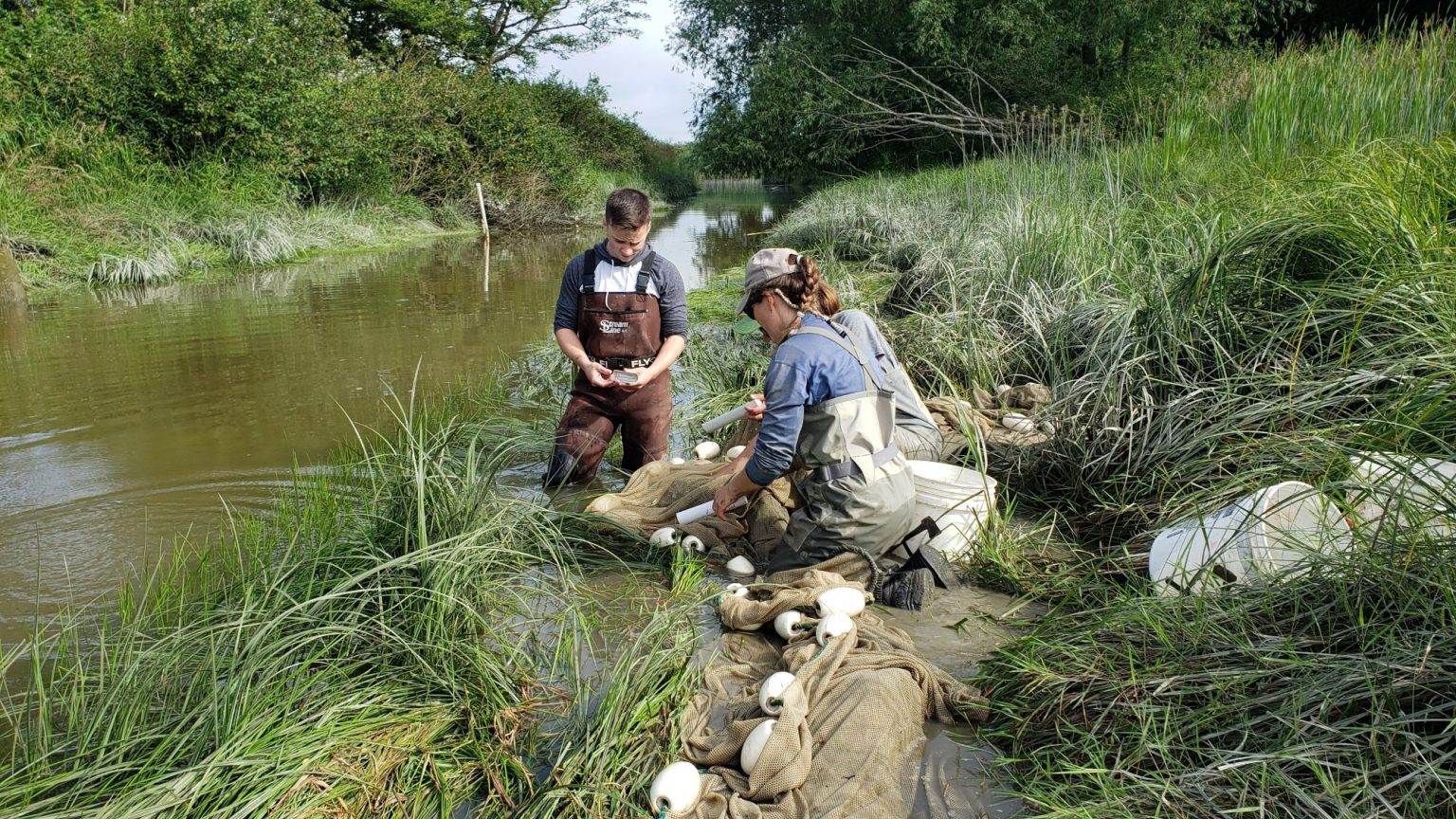Capstone Highlight: Salmon Migrations on the Stillaguamish River
Capstone research projects provide an exciting opportunity for students to put classroom learning into practice. These senior projects are the culmination of the undergraduate experience here at SAFS.
 Josef Mayor’s (BS 2021) capstone project focused on Chinook salmon in the Stillaguamish River and how stream flow impacts salmon eggs as well as the timing of juvenile migrations. He plans to continue to work with his advisor Tom Quinn and publish the study before returning for graduate school.
Josef Mayor’s (BS 2021) capstone project focused on Chinook salmon in the Stillaguamish River and how stream flow impacts salmon eggs as well as the timing of juvenile migrations. He plans to continue to work with his advisor Tom Quinn and publish the study before returning for graduate school.
Josef’s interest in science began when he was a child. His father, who was a longtime outdoors editor for the Tacoma News Tribune, traveled around the country on interviews and adventures, and Josef sometimes accompanied him. Josef reflects that his favorite places to travel were those with water and fish. Studying at SAFS became the “natural choice,” he says, “because I wanted to make sure my kids will have the same opportunities I did to explore fish-filled streams and lakes.”
Josef started working with salmon during an internship with the Stillaguamish Tribe’s Department of Natural Resources in his junior year. The opportunity allowed him to conduct field research and become familiar with salmon restoration efforts, data collection, and the watershed, and the Stillaguamish River eventually became his capstone study site.

His project showed that higher water flow events in the Stillaguamish River resulted in higher egg mortality.
“The lack of a relationship between egg deposition and fry production was particularly surprising,” Josef said.
He also found that higher peak flows after emergence, when eggs hatch in February and March, resulted in a higher proportion of fry migrating to estuarine environments rather than staying in their natal streams and growing into parr.
“The Stillaguamish watershed has been considerably degraded in the context of rearing habitat, which led me to predict that there would be a high level of competition for that limited juvenile rearing habitat,” said Josef.
However, data he collected indicated that the population of Chinook salmon is still well below its carrying capacity and too small to result in competition that might have altered when juveniles migrate to the estuary. Rather, peak discharge events seem to be the primary driver of when juveniles head downstream as the added turbidity in the water offers additional protection from predators during migration.
Josef also looked at how future flow projections will be influenced by climate change and how increased flow events in the Stillaguamish River could impact these aspects of Chinook life history. Peak annual flows are expected to be much closer to the mortality threshold observed during his capstone research, reducing overall production in the river system. Flows are also expected to be more heavily rain-derived rather than a rain/snow mix, resulting in more advantageous conditions for fry migration.
Fry and parr use the estuarine environment to grow before heading out into the ocean at roughly the same time. It is possible fry and parr habitats will increasingly overlap if the environment becomes more fry dominant.
“A fry-dominant system is heavily reliant on a strong estuary system that can support the higher number of early migrants, which still require significant development before they can enter the ocean,” said Josef. “Estuaries, particularly in the Puget Sound, are in varying states of degradation due to human activities, such as diking, which cuts off land from the natural tidal influence and reduces the amount of available salmon habitat.”
Josef notes this is of particular importance because it suggests that estuary restoration efforts may become more vital than stream restoration in the future.
This capstone presentation, as well as all of those from this year’s graduating cohort, can be viewed online.